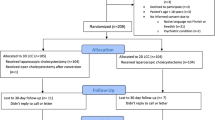Abstract
Background
Three-dimensional (3D) imaging has been suggested to improve learning and performance of laparoscopy. We sought to investigate whether 3D imaging could improve the outcomes after laparoscopic cholecystectomy.
Materials and methods
Two-hundred and forty-one consecutive patients underwent elective or urgent laparoscopic cholecystectomy using 2D (n = 111) and 3D (n = 130) imaging equipments from March 2017 to March 2019 at the Kainuu Central Hospital, Finland. The main outcomes of this study were biliary tract injury, conversion to open procedure and procedure duration.
Results
In the overall series, there were 5 cases of biliary tract injury (2.1%). When compared to 3D imaging, 2D was associated with increased risk of biliary tract injury in the overall series (0% in 3D vs. 4.7% in 2D, p = 0.026) in addition to a subgroup of acute cholecystitis patients operated by senior surgeons (n = 92), 0% in 3D group (n = 60) vs. 10.0% in 2D group (n = 32), p = 0.037 in univariate analysis. The rates of conversion to open surgery did not differ between the groups in the overall series (5.3 vs 5.7%, p = 0.909) or any of the subgroups. Duration of surgery with 3D vs. 2D imaging were comparable in the elective (57.0 ± 16.3 vs. 54.1 ± 18.9 min, p = 0.228) and urgent setting (66.9 ± 15.1 vs. 67.4 ± 16.6 min, p = 0.805). Such differences were not significant in multivariate analysis.
Conclusions
The present study suggests that the use of 3D imaging is significantly associated with a reduced risk of intraoperative biliary tract injury during laparoscopic cholecystectomy especially in acute cholecystitis.
Similar content being viewed by others
References
Flum DR, Cheadle A, Prela C et al (2003) Bile duct injury during cholecystectomy in Medicare beneficiaries. JAMA 290(16):2168–2173
Abdelrahman M, Belramman A, Salem R et al (2018) Acquiring basic and advanced laparoscopic skills in novices using two-dimensional (2D), three-dimensional (3D) and ultra-high definition (4K) vision systems: a randomized controlled study. Int J Surg 53:333–338
Harada H, Kanaji S, Hasegawa H et al (2018) The effect on surgical skills of expert surgeons using 3D/HD and 2D/4K resolution monitors in laparoscopic phantom tasks. Surg Endosc 32(10):4228–4234
Hagelsteen K, Langegård A, Lantz A et al (2017) Faster acquisition of laparoscopic skills in virtual reality with haptic feedback and 3D vision. Minim Invasive Ther Allied Technol 26(5):269–277
Spille J, Wenners A, von Hehn U et al (2017) 2D versus 3D in laparoscopic surgery by beginners and experts: A randomized controlled trial on a pelvitrainer in objectively graded surgical steps. J Surg Educ 74(5):867–877
Vilaca J, Leite M, Correia-Pinto J et al (2018) The influence of 3D in single-port laparoscopy surgery: An experimental study. Surg Laparosc Endosc Percutan Tech 28(4):261–266
Schoenthaler M, Schnell D, Wilhelm K et al (2016) Stereoscopic (3D) versus monoscopic (2D) laparoscopy: comparative study of performance using advanced HD optical systems in a surgical simulator model. World J Urol 34(4):471–477
Agrusa A, Di Buono G, Buscemi S et al (2018) 3D laparoscopic surgery: a prospective clinical trial. Oncotarget 9(25):17325–17333
Gurusamy KS, Sahay S, Davidson BR (2011).Three dimensional versus two dimensional imaging for laparoscopic cholecystectomy. Cochrane Database Syst Rev 19(1)
Bilgen K, Ustün M, Karakahya M et al (2013) Comparison of 3D imaging and 2D imaging for performance time of laparoscopic cholecystectomy. Surg Laparosc Endosc Percutan Tech 32(2):180–183
Hanna GB, Shimi SM, Cuschieri A (1998) Randomised study of influence of two-dimensional versus three dimensional imaging on performance of laparoscopic cholecystectomy. Lancet 351(9098):248–251
Tzovaras G, Peyser P, Kow L et al (2001) Minimally invasive management of bile leak after laparoscopic cholecystectomy. HPB (Oxford) 3(2):165–168
Smith R, Schwab K, Day A et al (2014) Effect of passive polarizing three-dimensional displays on surgical performance for experienced laparoscopic surgeons. Br J Surg 101(11):1453–1459
Author information
Authors and Affiliations
Corresponding author
Ethics declarations
Conflict of interest
Asta Tauriainen, Fausto Biancari and Tuomas Tauriainen have no conflicts of interest or financial ties to disclose.
Ethical approval
A research coordinator from the institutional review board was consulted on. Based on the consultation, approval for the study was granted. Written consent from the study population or from the institutional review board was not required for the present study.
Additional information
Publisher's Note
Springer Nature remains neutral with regard to jurisdictional claims in published maps and institutional affiliations.
Rights and permissions
About this article
Cite this article
Tauriainen, A., Biancari, F. & Tauriainen, T. Comparative Analysis of Three-Versus Two-dimensional Imaging in Laparoscopic Cholecystectomy. World J Surg 45, 1370–1375 (2021). https://doi.org/10.1007/s00268-020-05934-z
Accepted:
Published:
Issue Date:
DOI: https://doi.org/10.1007/s00268-020-05934-z




